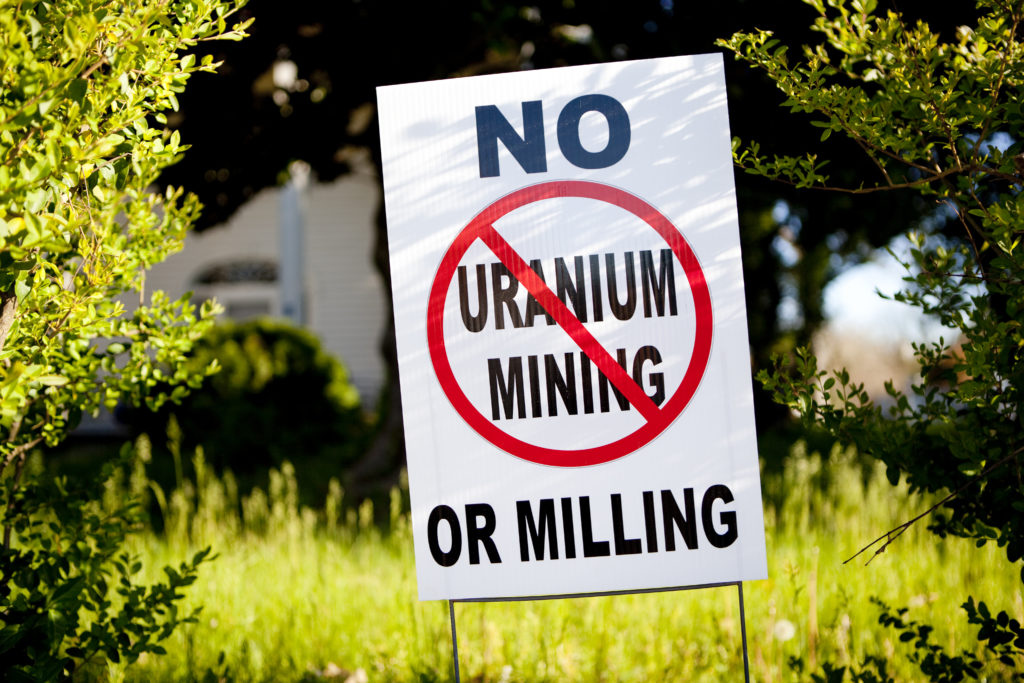In 1979, Bill Speiden was offered a lease for uranium mining and milling on his Orange County farm. That uranium hasn’t gone anywhere.
The debate over uranium mining and milling in Virginia is coming to a head, with a much-awaited study from the National Academy of Sciences due to be released in December. Proponents are pushing the General Assembly to end the state’s ban on uranium mining in the January 2012 session. The stakes are high; not just for southwest Virginia, but for the entire state—including the Piedmont.
In the 1970s and 80’s, companies filed mining leases on land in Culpeper, Madison, Fauquier and Orange, where uranium was detected.
That’s when Orange County dairy farmer Bill Speiden got involved. Speiden’s farm, which he had started in 1959, was sitting on potentially one of the highest concentrations of uranium in northern Virginia. He found this out in 1979, when he was approached by Marline Uranium Corporation. The company initially offered him a nice signing bonus if he leased his land for uranium mining and milling. When Speiden seemed to hesitate, they went on to offer Speiden a partnership in the company.
“At that time,” Speiden recalls, “we didn’t know much about uranium mining. We actually thought it sounded good. We thought the income we would get from leasing the farm would be a nice bonus to life. But, we did have some questions.”
The Speidens’ decided to some research before they signed on. They looked up information on existing mines, talked to ranchers in areas where mining and milling was taking place, and got in touch with miners. They bought plane tickets and flew to out west to tour mines and mills. Long story short, the Speidens looked into the issue — and they looked long and hard.

“After all of this,” Speiden recalls, “we were taken aback by all of the problems these places were having. Wells were getting contaminated, livestock were getting sick from leakage… and that was in areas with only 12-14 inches of rain a year! We have, on average, over 40 inches of rain here. We could see some serious potential problems that we didn’t want to take ownership of.”
Due to all of the unknowns surrounding the safety of uranium mining, especially in areas with climates similar to that of Virginia’s, the General Assembly put a state moratorium on uranium mining in 1982.
Today, Virginia Uranium, Inc., is pushing to end that moratorium. They claim that their proposed mine near Danville will bring jobs to the area. Yet, Speiden’s research has led him to the conclusion that the risks are not worth the potential gains.
“Jobs are very necessary,” he says, “but these mining operations tend to have a boom-bust syndrome, and they leave behind a mess… I would suggest that anyone thinking along those lines, when it comes to uranium mining and milling, look at the Navajo Nation and see what their situation is.”
The Navajo Nation, which spreads across parts of Arizona, New Mexico and Utah, joined the uranium mining boom of the 1950s. The mining and milling, however, proved to be detrimental to the health of their community and their land. Their community endured increased rates of cancer and other disorders, which were traced back to uranium exposure, and the over 1,000 abandoned mining shafts on Navajo land present ongoing health and environmental hazards. Today, the Navajo leadership openly expresses their regret in allowing uranium mining on their land.
Virginia Uranium, Inc. claims they can mine safely in Virginia using new technologies. Yet, they have been unable to provide credible examples of other places with a similar climate where uranium has been mined without serious environmental and health hazards, and they haven’t provided details on their proposed operations.
This is not just an issue for southwest Virginia, a fact that Speiden is all too familiar with. “What they can do in one part of Virginia, they can do in any part of Virginia,” he says. “There are outcrops of uranium in southern and northern Virginia, and many of them would affect state-wide watersheds… and we can’t live without our clean water supply. No amount of jobs is worth that risk.”
